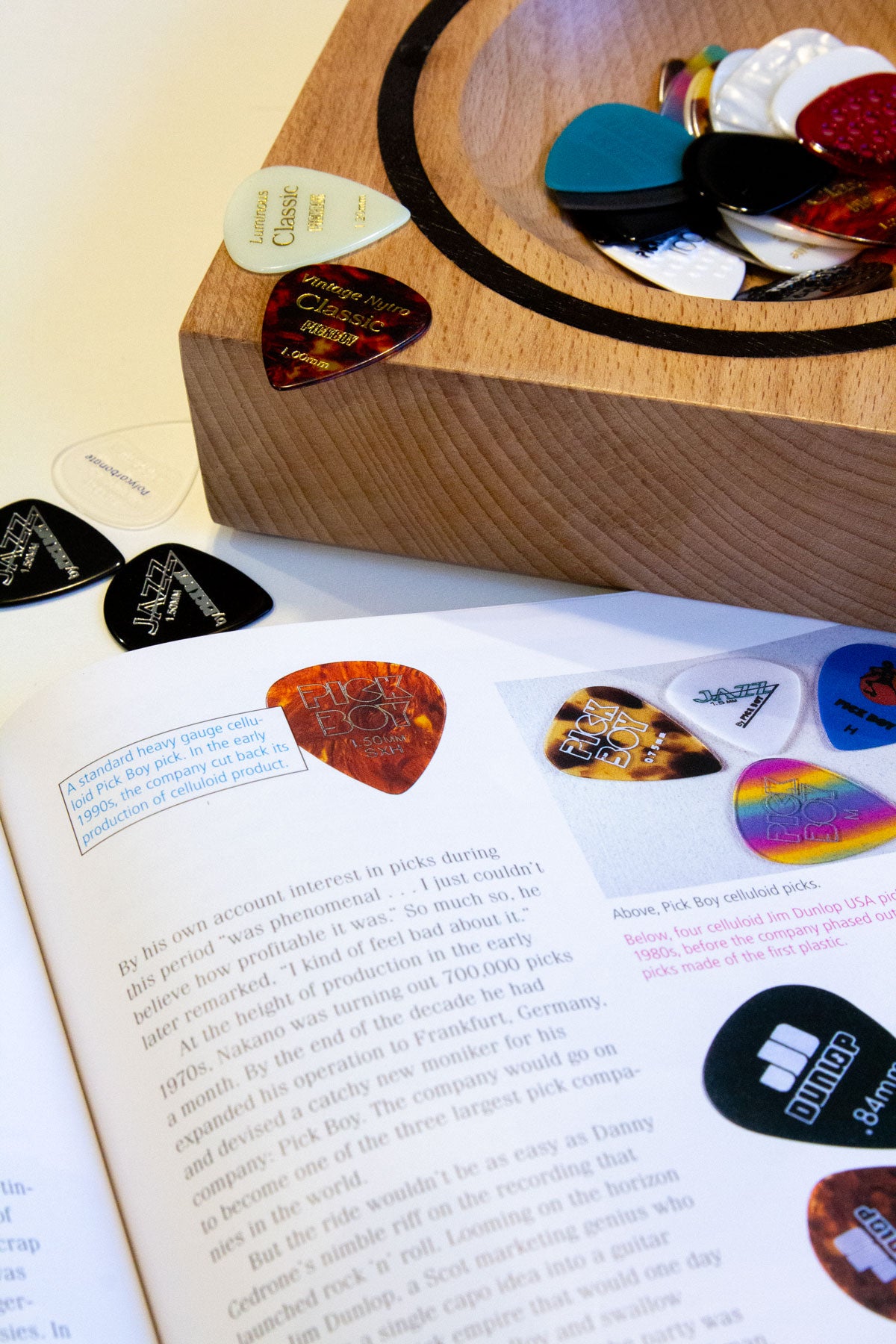The story of PICKBOY featured in the overseas book 'Picks!'
The rare overseas book 'Picks! – The Colorful Saga of Vintage Celluloid Guitar Plectrums' (Author: Will Hoover) introduces the history of PICKBOY.
This time, I would like to touch on the roots of PICKBOY while introducing its content.

■ The trigger was 'scraps of tortoiseshell'
PICKBOY founder Shoji Nakano originally dealt in gentlemen's goods. In 1961, during a visit to a factory that manufactured tortoiseshell shoehorns, he noticed small triangular pieces made from scraps, which was the beginning of everything.
They were used as finger nails for string instruments, and from there, Mr. Nakano sensed the potential of a "pick" and started manufacturing after sourcing 20,000 pieces of material.

■ A pick brand that the world is paying attention to
At that time in Japan, the demand for picks was rapidly increasing, and Mr. Nakano's factory was experiencing rapid growth. Due to the difficulty of sourcing and handling tortoiseshell, the material transitioned to celluloid, expanding the variations in shape and thickness. By the early 1970s, production scale exceeded 700,000 pieces per month.
The PICKBOY brand eventually expanded its base to Frankfurt, Germany, and became known as one of the three major pick brands in the world.

■ PICKBOY continues to evolve even now.
The fact that it was featured in the book 'Picks!' is also proof that PICKBOY's craftsmanship has been recognized globally. We continue to pursue the possibilities of picks with new designs and technologies, while being particular about materials and sound.
The story of music and craftsmanship embedded in a small pick. From now on, PICKBOY will continue to be close to your hands as you 'choose the sound'.
*The book 'Picks! – The Colorful Saga of Vintage Celluloid Guitar Plectrums' is a publication from Miller Freeman Books released in 1995. The images are quoted for the purpose of introducing the book.

